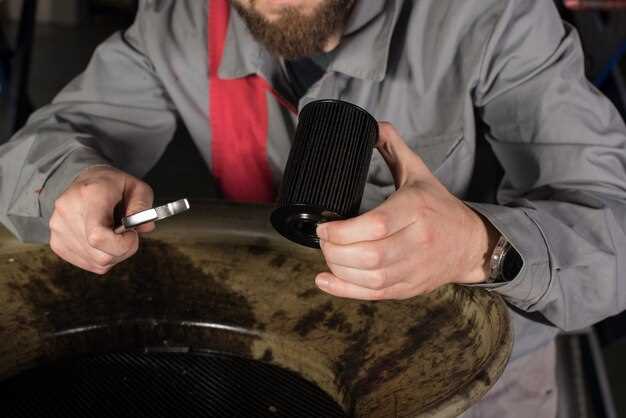
Nitrous oxide has become a popular choice among automotive enthusiasts looking to enhance their vehicle’s performance. However, effectively harnessing the power of nitrous requires precise tuning to achieve optimal gains while maintaining engine reliability. This guide aims to provide essential tips that will help you unlock the full potential of your nitrous system.
The key to successful nitrous performance lies in understanding the dynamics of your engine and how it responds to increased air and fuel intake. Proper tuning involves not only adjusting fuel maps and ignition timing but also understanding the effects of temperature and pressure on nitrous performance. With every modification, attention must be paid to engine safety and longevity.
In this comprehensive guide, we will explore effective strategies for tuning your nitrous setup–ranging from choosing the right jetting size to configuring your fuel system for perfect balance. Whether you’re a seasoned racer or a novice looking to enhance your street car, these tuning tips will ensure that you maximize nitrous performance while keeping your engine safe and reliable.
Adjusting Fuel Ratios for Optimal Nitrous Use

Optimizing fuel ratios when using nitrous oxide is crucial for achieving maximum performance while preventing engine damage. A well-balanced air-fuel mixture ensures that the engine can utilize the added oxygen from nitrous efficiently, leading to improved horsepower without risking detonation or lean conditions.
The ideal air-fuel ratio for nitrous applications typically leans towards richer mixtures, often ranging from 11.5:1 to 12.5:1. This adjustment compensates for the additional oxygen supplied by the nitrous, allowing for a complete combustion process. A rich fuel mixture helps keep cylinder temperatures down, which is essential in high-performance scenarios where prolonged nitrous use can elevate heat levels significantly.
To achieve optimal fuel ratios, start by conducting baseline tuning on your engine. Monitor your wideband air-fuel ratio gauge under various load conditions. Once you establish the baseline, gradually introduce nitrous while watching for any significant changes in the air-fuel ratio. Adjust the fuel delivery system accordingly, whether that involves changing jet sizes, modifying fuel pressure, or recalibrating the fuel injectors.
It’s important to consider the type of nitrous system you are using, as dry and wet systems require different tuning approaches. In a dry system, the nitrous is injected without additional fuel, necessitating a more precise adjustment of the fuel ratio to avoid lean conditions. In contrast, a wet system mixes fuel and nitrous, allowing for more straightforward tuning since the fuel is automatically adjusted alongside the nitrous delivery.
Additionally, monitoring engine performance through data logging can provide insights on how various adjustments affect your fuel ratios. By analyzing this data, you can make informed decisions to fine-tune your setup for the best results. Remember, achieving optimal fuel ratios when using nitrous is not just about increasing power; it’s about maintaining engine reliability and ensuring a smooth tuning experience.
Selecting the Right Nitrous System for Your Setup
Choosing the appropriate nitrous system is crucial for optimizing performance and ensuring reliability. A well-selected system can enhance your engine’s potential while a mismatched setup can lead to serious issues. Here are essential considerations for selecting the right nitrous system:
- Purpose of Use:
- Determine whether your primary goal is drag racing, street performance, or circuit racing.
- Different applications may require different types of nitrous systems such as wet or dry systems.
- Type of Engine:
- Consider your engine’s design, compression ratio, and fuel type.
- Higher compression engines may require a specific nitrous system optimized for their operating conditions.
- Nitrous Configuration:
- Choose between wet systems, which mix nitrous and fuel before entering the intake, and dry systems, which inject nitrous only.
- Wet systems are generally preferred for higher power applications due to better control over the fuel mixture.
- Power Levels:
- Estimate the amount of horsepower increase you want to achieve.
- Select a nitrous kit that supports the desired power level while keeping engine safety in mind.
- Quality of Components:
- Invest in reputable brands known for reliability and performance.
- High-quality solenoids, nozzles, and lines can significantly impact the effectiveness of the nitrous system.
- Budget:
- Set a budget that includes the cost of the nitrous kit, installation, and necessary tuning modifications.
- Factor in costs for safety equipment or upgrades needed for the engine to handle increased power.
Once you have selected the appropriate nitrous system, proper tuning is essential to maximize performance and ensure the longevity of your engine. Make sure to consult with a professional or utilize reliable resources to get the most from your nitrous setup.
Monitoring Engine Parameters to Prevent Damage

When utilizing nitrous oxide in your vehicle, it’s essential to keep a close eye on various engine parameters to ensure optimal performance while preventing potential damage. This guide outlines key parameters you should monitor.
Fuel Pressure: Maintaining the correct fuel pressure is crucial. Nitrous systems require additional fuel to compensate for the increase in oxygen. A drop in fuel pressure can lead to a lean condition, risking engine damage. Use a fuel pressure gauge to continuously monitor levels while operating.
Air-Fuel Ratio (AFR): The ideal AFR is essential when adding nitrous. A ratio that is too lean can cause pre-ignition or detonation, while a rich mixture can lead to incomplete combustion. An AFR gauge provides real-time feedback and should be included in your monitoring setup.
Boost Levels: If your engine is supercharged or turbocharged, it’s important to monitor boost pressure. Increasing the amount of nitrous can elevate boost levels, which may push your engine beyond its safe limits. Use a boost gauge to track these parameters closely.
Engine Temperature: Nitrous can significantly increase engine temperatures. High temperatures can lead to severe engine damage. Installing an engine coolant temperature gauge will help keep track of your engine’s health. Consider using a water-methanol injection system to mitigate excessive heat.
Knock Sensors: Incorporating knock sensors into your setup can alert you to dangerous pre-ignition events. Continuous monitoring enables you to make adjustments before serious damage occurs, ensuring engine longevity while on nitrous.
In summary, monitoring key engine parameters is vital for the safe and effective use of nitrous. Regular checks and real-time data allow you to optimize performance while safeguarding against damage. Utilize these metrics to keep your engine running smoothly and efficiently.



